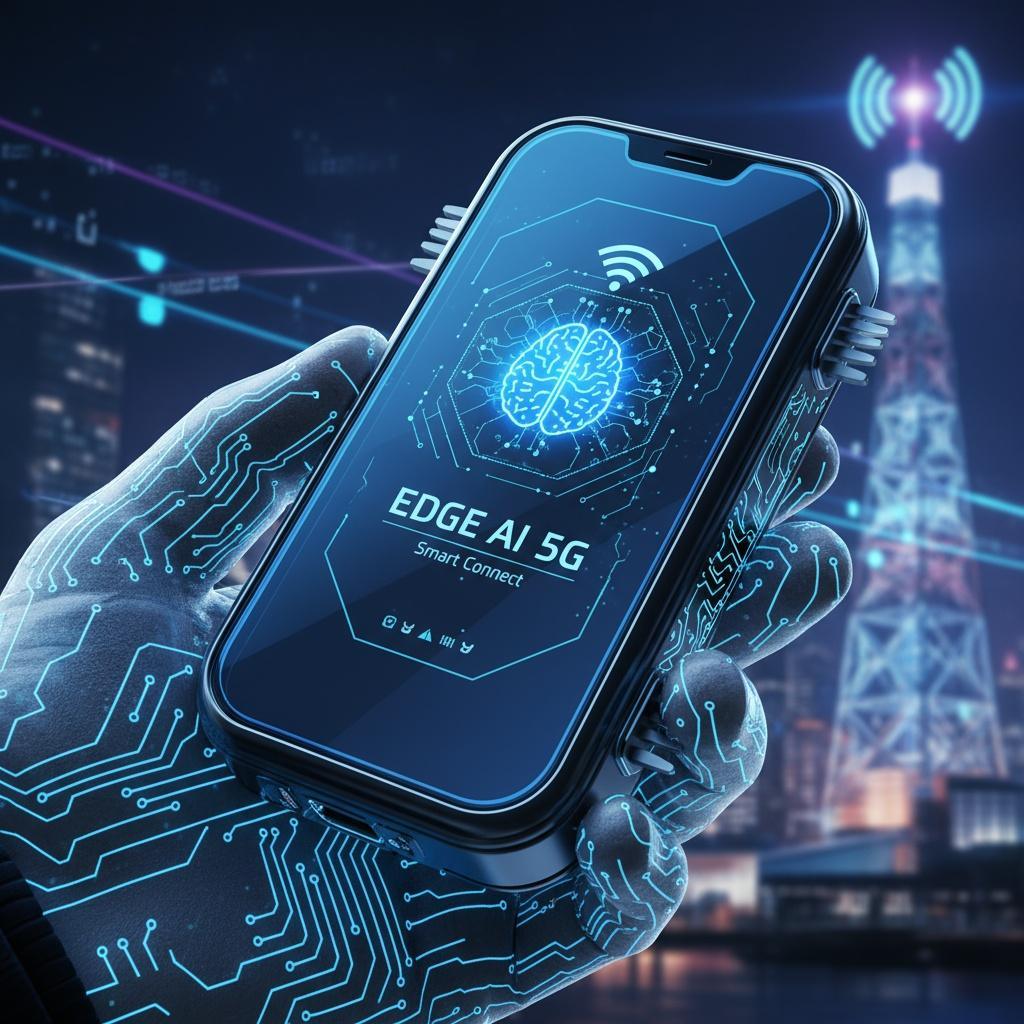In today’s fast-evolving technology landscape, the integration of Edge AI and 5G networks is reshaping how smart devices operate. By combining the rapid data processing capabilities of Edge AI with the ultra-fast, low-latency connectivity of 5G, smart devices can now perform more efficiently and intelligently than ever before.
Edge AI refers to the processing and analysis of data directly on devices or nearby edge servers, rather than relying solely on distant cloud data centers. This local computation significantly reduces latency, enabling real-time decision-making essential for applications like autonomous vehicles, industrial automation, and healthcare monitoring.
5G networks complement Edge AI by providing unprecedented bandwidth and ultra-low latency communications, supporting the connection of millions of devices within a dense network seamlessly. This ensures that smart devices can communicate swiftly and reliably, even in environments with high device concentrations such as smart cities or factories.
One of the hallmarks of this synergy is the significant reduction in bandwidth usage. Since Edge AI processes most data locally, only critical insights or summaries need to be transmitted through the network, preventing congestion and optimizing network resources. This efficiency also contributes to prolonged battery life and reduced energy consumption for smart devices.
Real world examples highlight the transformative impact of Edge AI and 5G integration. Retail environments utilize real-time in-store analytics powered by Edge AI, while 5G ensures seamless communication for dynamic stock management. Industrial settings leverage these technologies for predictive maintenance and automated quality control, enhancing productivity and reducing operational costs.
Healthcare also benefits immensely, with wearables leveraging Edge AI to continuously monitor vital signs and 5G networks enabling instant data transmission to medical professionals for timely interventions. In smartphones, Edge AI integrated with 5G enables advanced functions like real-time image recognition and enhanced user experience without relying heavily on cloud processing.
Emerging trends such as federated learning and neuromorphic computing are set to further enhance the capabilities of Edge AI at the network edge. Federated learning promotes privacy by allowing devices to collaboratively train AI models without sharing sensitive data, while neuromorphic chips mimic human brain functionality for efficient processing.
In essence, the powerful combination of Edge AI and 5G is laying the foundation for the next generation of smart devices and IoT applications. This partnership not only accelerates data processing and communication but also improves privacy, energy efficiency, and scalability across a wide range of industries.
As companies continue to innovate, this fusion of technologies will unlock new opportunities for digital transformation, driving smarter, more responsive, and adaptive devices that enhance everyday life and business operations globally.






